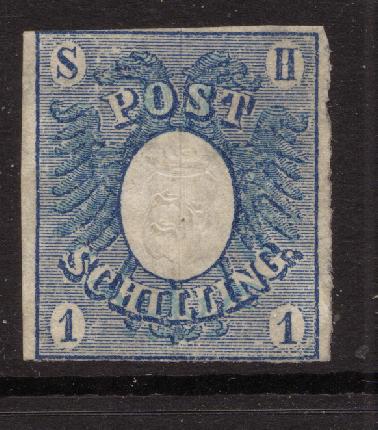
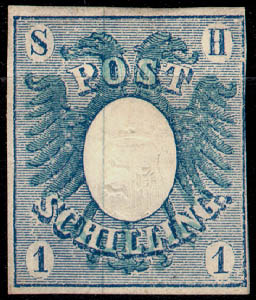
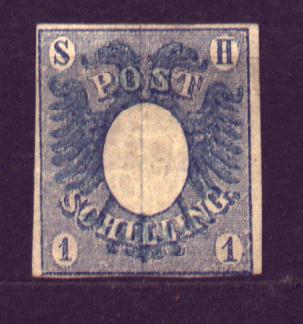
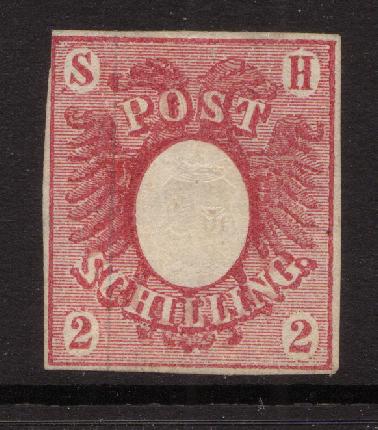
Return To Catalogue - Other German States - Germany
Note: on my website many of the
pictures can not be seen! They are of course present in the cd's;
contact me if you want to purchase them: evert@klaseboer.com.
1 s blue 2 s red
Value of the stamps |
|||
vc = very common c = common * = not so common ** = uncommon |
*** = very uncommon R = rare RR = very rare RRR = extremely rare |
||
| Value | Unused | Used | Remarks |
| 1 s | RR | RRR | |
| 2 s | RR | RRR | |
According to 'Distinguishing Characteristics of Classic Stamps: Old German States' by Hermann Schloss, a private reprint was made by Albin Rosenkranz. It has no silk thread, there is no background behind the eagle (the easiest test) and the paper is different. Usually the words 'Ndr.' or 'Neudr.' are printed on the backside. According to the Serrane guide, these reprints were made in 1894.
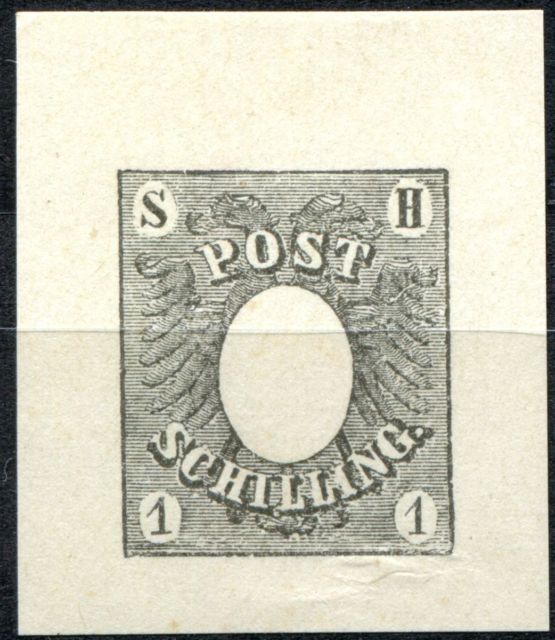

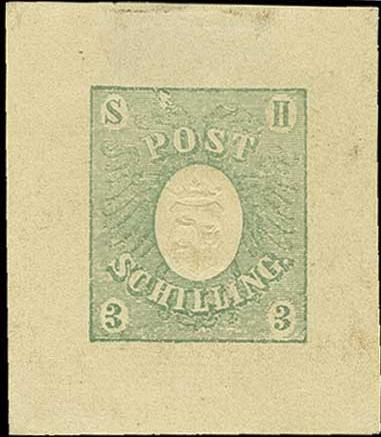
A Rozenkranz reprint of the 1 Sch and a non-issued 3 s value with
no background lines behind the eagle.
I have seen minisheets of Rozenkranz reprints with 8 stamps (4 on the frontside and 4 on the backside) with no 'Ndr.' or similar impression on the back of each stamp. I've seen the values 1 s blue, 2 s red, 3 s green and 3 s yellow.
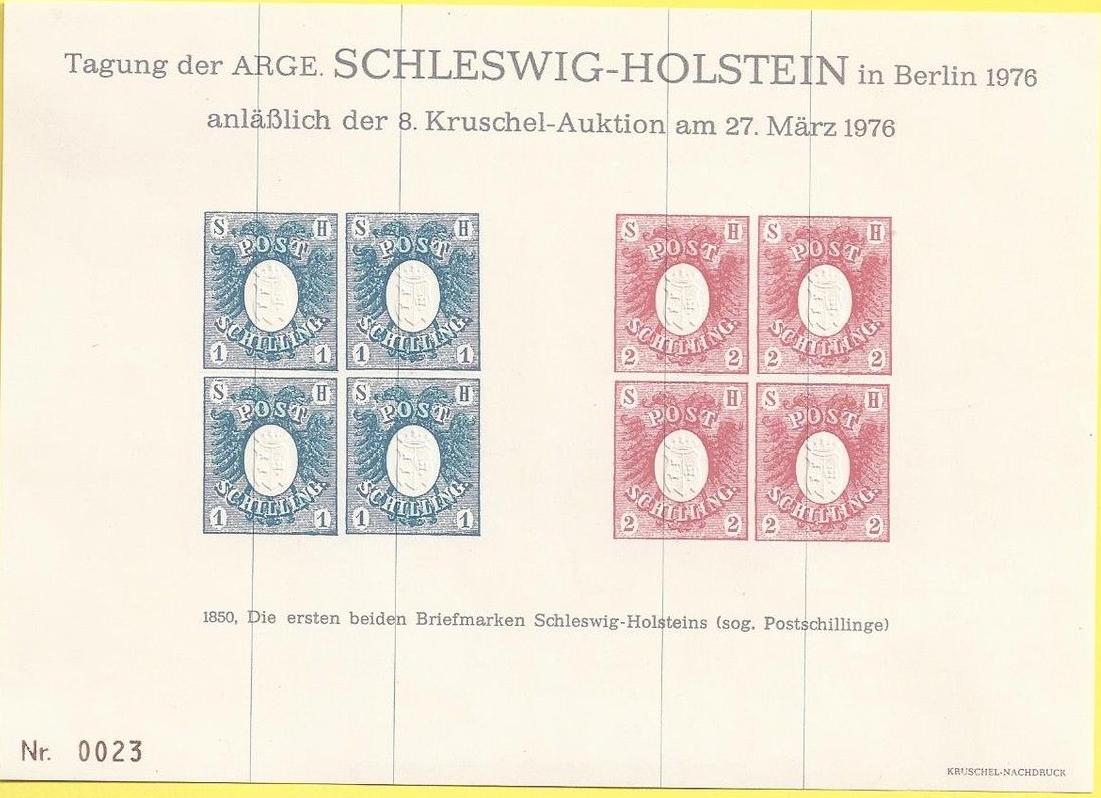
Another reprint for a Kruschel Auction in 1976.
Typical cancels:
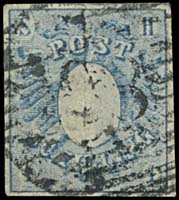
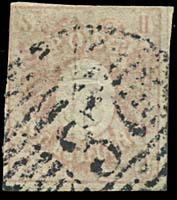
I'm not sure if these are forgeries or not
Numeral cancels exist with numbers ranging from 1 to 42. They are not to be confused with the later used Danish numeral cancels. A complete list can be found at: http://www.alneum-resources.com/resources/numschleswig.html. The numeral cancel and its corresponding town:
1 Ahrensbock
2 Ahrensburg
3 Altona
4 Barmstedt
5 Bornhoved
6 Bramstedt
7 Brunsbuttel
8 Crempe
9 Elmshorn
10 Eutin
11 Gluckstadt
12 Hamburg
13 Heide
14 Heiligenhafen
15 Horst
16 Itzehoe
17 Kellinghusen
16 Kiel
18 Kiel
19 Kiel Bahnhof (railway station)
20 Lubeck
21 Lunden
22 Lutjenburg
23 Meldorf
24 Neumunster
25 Neustadt
26 Nortorf
27 Oldenburg
28 Oldesloe
29 Pinneberg
30 Ploen
31 Preetz
32 Reinbeck
33 Remmels (Hohenwestedt after 1864)
34 Rendsburg
35 Segeberg
36 Uetersen
37 Wandsbeck
38 Wilster
39 Railway post office
40 Railway post office
41 Field post office
42 Schwartau
The Serrane guide mentions six different forgeries. Among them a Hamburg set, a Paris set and a Geneva set (Fournier).
Forgeries, example:
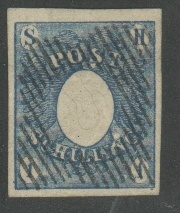
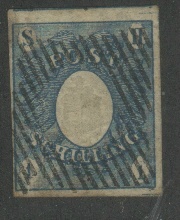
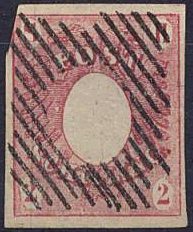

(Could these be Fournier forgeries?)
The genuine stamps should have a blue silk thread (however, this has also been forged). In the above forgeries, the 'L' of 'SCHILLING' is approaching the central oval too much. In the genuine stamps there should be a part of the tail of the eagle. The cancel is also very typical on this kind of forgery. Fournier offers these stamps in his 1914 pricelist for 1 Swiss Franc (both values) as second choice forgeries.
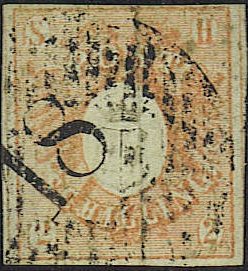
Another forgery. This could be an uncancelled stamp with a forged
'18' cancel. It does resemble the forged cancel shown on http://www.stampsx.com/ratgeber/stempelliste-falsch.php.
I have no further information.


Forgery: This stamp has the 'S' in the upper corner different
from the above stamps, also the 'S' in 'POST' is different,
furthermore the second feather from above on the right hand side
sticks out much more than in the above stamps. In the genuine
stamps, the heads of the 'H' and 'I' in 'SCHILLING' are joined.
The horizontal bar of the 'H' of this word should be very thin.
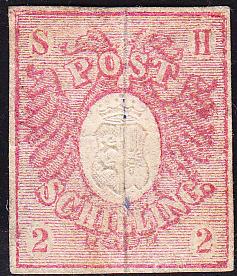
The 'S' and 'H' are placed too low in this forgery of the 2 Sch
stamp

In this forgery of the 2 Sch the bottoms of the '2's are curved.
They are straight in the genuine stamps. I've seen a whole sheet
of 12 (3 rows of 4) of these forgeries with 'FALSCH' written at
the back.
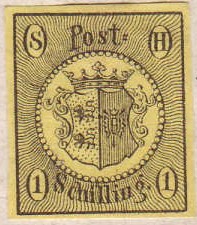
I've been told that this is a proof; I've seen them in various
colours: black, black on yellow, black on red, black on yellow,
black on orange, blue, blue on grey, blue on yellow, blue on red,
blue on orange and blue on yellow. They are all in the value 1
Schilling.
In the period from 1 September 1851 to the end of March 1864, the stamps of Denmark were used in Schleswig-Holstein.
1/2 s green 1 1/4 s green 1 1/4 s lilac 1 1/3 s red 2 s blue 4 s red 4 s brown
Value of the stamps |
|||
vc = very common c = common * = not so common ** = uncommon |
*** = very uncommon R = rare RR = very rare RRR = extremely rare |
||
| Value | Unused | Used | Remarks |
| 1/2 s | *** | *** | |
| 1 1/4 s green | *** | *** | |
| 1 1/4 s lilac | *** | ** | |
| 1 1/3 s red | *** | *** | |
| 2 s | *** | *** | |
| 4 s red | *** | R | |
| 4 s brown | *** | *** | |
Cut from an envelope?

Fournier forgery; 'Proof' of the 1 1/3 Sch value.
1/2 s red 1 1/4 s green 1 1/3 s lilac 2 s blue 4 s brown
Value of the stamps |
|||
vc = very common c = common * = not so common ** = uncommon |
*** = very uncommon R = rare RR = very rare RRR = extremely rare |
||
| Value | Unused | Used | Remarks |
| 1/2 s | *** | *** | |
| 1 1/4 s | *** | ** | |
| 1 1/3 s | *** | R | |
| 2 s | *** | R | |
| 4 s | *** | RR | |
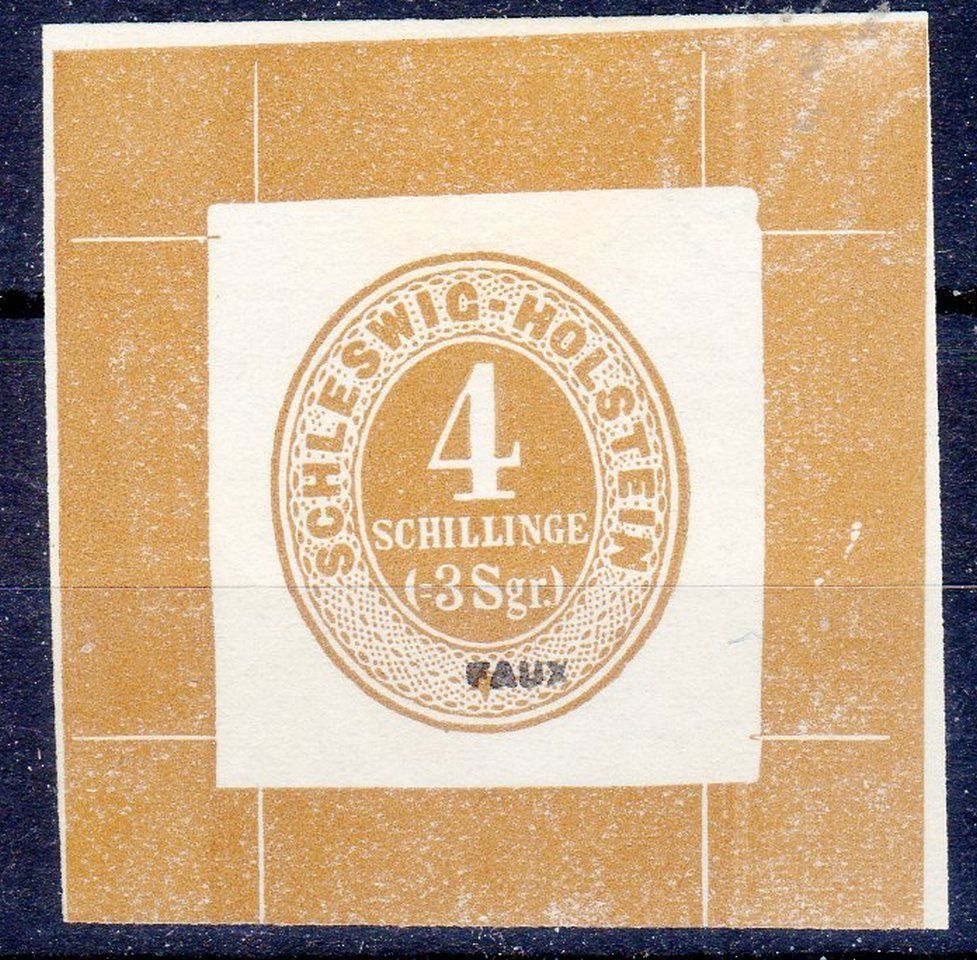
Fournier forgery: 'Proof' of the 4 Sch value.

Forgery, possible some kind of cut from a postcard?
White text on coloured background
1/2 s green 1 1/4 s lilac 2 s blue
Value of the stamps |
|||
vc = very common c = common * = not so common ** = uncommon |
*** = very uncommon R = rare RR = very rare RRR = extremely rare |
||
| Value | Unused | Used | Remarks |
| 1/2 s | R | R | |
| 1 1/4 s | R | *** | Reprint: RR |
| 2 s | *** | *** | |
Coloured text on white background
1 1/4 s lilac 1 1/3 s (=1 sgr) red 2 s blue 4 s (=3 sgr) brown
Value of the stamps |
|||
vc = very common c = common * = not so common ** = uncommon |
*** = very uncommon R = rare RR = very rare RRR = extremely rare |
||
| Value | Unused | Used | Remarks |
| 1 1/4 s | *** | *** | |
| 1 1/3 s | *** | *** | |
| 2 s | R | R | |
| 4 s | *** | *** | |
A private reprint of the 1 1/4 s with white letters was made by Albin Rosenkranz (only 1000 reprints were printed by him). There are some small dots above the right star in this reprint. The 'G' of 'SCHILLING' is closed. The large '1' has a lot of shading lines (which do not appear in the original stamps). Non-existant essays were also made in the colour black and also in the color blue.
These stamps have been forged, examples of some Fournier forgeries:
The first two Fournier forgeries above are cancelled with a
four ring cancel with '191' in the center. The last one has the
cancel 'AHRENSBOCK 19/9 66 9 10 V'. Other cancels that were used
by Fournier are (see image below):
HUSUM 19/6 12-1 N
WESSELBUREN 24 11 8-10 N
BRAMSTEDE 27 6 1865
FLENSBURG 10/8 67 6-7 N
ALTONA 27/.. 66 2-...
SCHLESWIG 1 4 66 ....
ROTHENKRU.. IN SCHLESWIG 14 11 65 * 4-5 N (in a rectangle)
ALTONA in a straight line
'L.P. No 1' in a double outlined rectangle.
'L' in three concentric circles
5 parallel lines

Forged Fournier cancels taken from a 'Fournier Album of
Philatelic Forgeries', reduced sizes

Forged 'L' in three concentric rings, possibly a Lubeck cancel
used on Schleswig forgeries by Fournier?
Probably all the above stamps were forged by Fournier ('Schleswig Holstein', 'Herzogth. Schleswig' and 'Herzogth. Holstein', except the ones with white text). Examples can also be found in 'The Fournier Album of Philatelic Forgeries'. However, no mention of these forgeries is made in Fournier's 1914 pricelist.

Another forgery(?) of the 4 Sch stamp with the lettering
different from the genuine stamps.
1 1/4 s blue ('1 1/4' large)
1 1/4 s blue (letters with 'H.R.Z.G.L.')
1 1/4 s blue (two types, letters with 'HRZGL')
Value of the stamps |
|||
vc = very common c = common * = not so common ** = uncommon |
*** = very uncommon R = rare RR = very rare RRR = extremely rare |
||
| Value | Unused | Used | Remarks |
| 1 1/4 s | *** | *** | '1 1/4' large; 'SLM' means 'Schilling Lauenburgischer Munze' |
| 1 1/4 s | R | *** | 'H.R.Z.G.L.', 'SRM' means 'Skilling Rigs Mint'. |
| 1 1/4 s | R | *** | 'HRZGL' |
There should be an underprint on these stamps leaving a white 'P' in the center of the stamp. The 1 1/4 s with 'HRZGL' inscription was reprinted with help of Albin Rosenkranz (1910?); the reprint has the 'S' of 'POST' joining the upper white space. The 'R' of 'CRT' has a broken top. It is described in Ohrt's reprint book. Non-existant reprints of 'Essays' in black and also in red were printed at the same time.


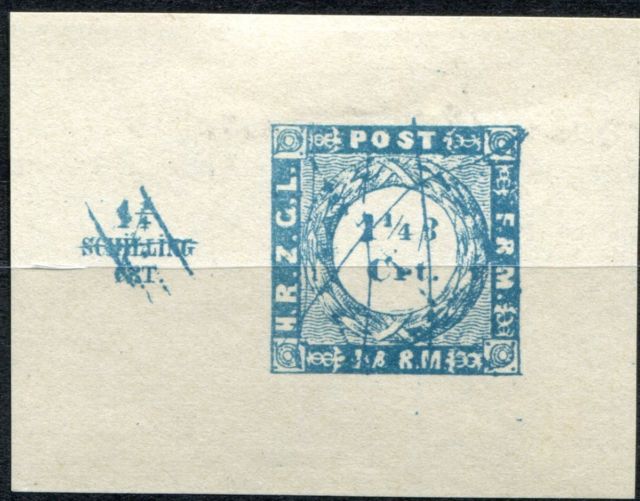
Rozenkranz reprints in blue and red and a Rozenkranz 'proof'.
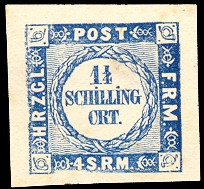
Forgery with dots on the "I"s in "SCHILLING".
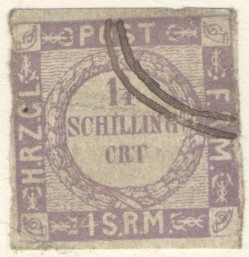
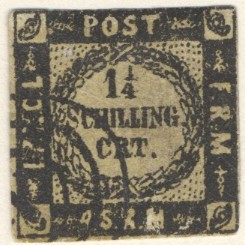
Some forgeries in the wrong colors: lilac and black.
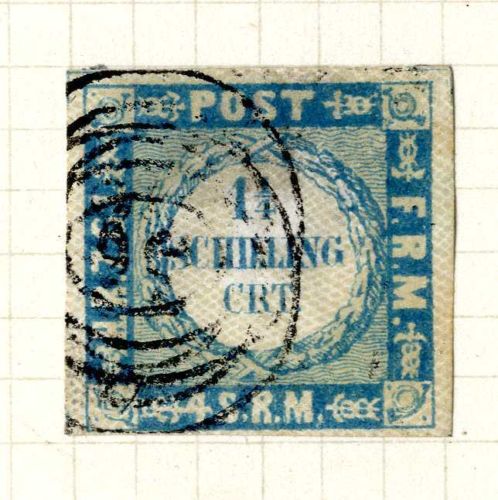
Other deceptive forgery, in my view the background pattern is
different.
Typical cancel, 3 rings with number inside:

(Reduced view)
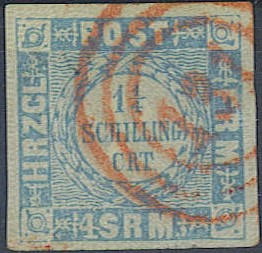
(Forged red '131' cancel on a genuine stamp)
Numeral cancel
An often found cancel is the numeral cancel consisting of three concentric circles with a number in the center (I've only seen it in black). The number is different for each town, some numbers with their corresponding towns:
21 Friedrichstadt
37 Korsør (Korsoer)
83 Garding
113 Altona
115 Eutin
116 Glückstadt
117 Heide
118 Heiligenhafen
119 Itzehoe
120 Kellinghusen
121 Kiel
122 Lütjenburg
123 Meldorf
125 Neustadt
126 Nortorf
127 Oldenburg
131 Preetz
133 Segeberg
134 Uetersen
137 Barmstedt
138 Bornhöved
139 Bramstedt
142 Horst
143 Lunden
148 Lauenburg
149 Mölln
156 Hanerau
158 Lensahn
168 - 170 Railway cancels of Holstein
172 Marne
179 Korsoer railway cancel
190 Steamship cancel nr 6
199 Sterup
206 Railway cancel Elmshorn-Itzehoe
214 Pellworm
2 1/2 p grey 5 p green 7 1/2 p brown 10 p red 15 p lilac 20 p blue 25 p orange 35 p brown 40 p lilac 75 p blue
These stamps have perforation 14 x14 1/2
Value of the stamps |
|||
vc = very common c = common * = not so common ** = uncommon |
*** = very uncommon R = rare RR = very rare RRR = extremely rare |
||
| Value | Unused | Used | Remarks |
| 2 1/2 p | vc | vc | |
| 5 p | vc | vc | |
| 7 1/2 p | c | c | |
| 10 p | c | c | |
| 15 p | c | c | |
| 20 p | c | c | |
| 25 p | c | c | |
| 35 p | c | c | |
| 40 p | c | c | |
| 75 p | c | c | |
Larger size
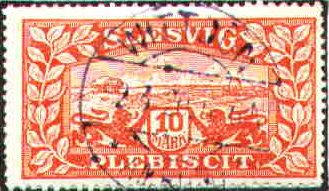
1 M brown 2 M blue 5 M green 10 M red
Value of the stamps |
|||
vc = very common c = common * = not so common ** = uncommon |
*** = very uncommon R = rare RR = very rare RRR = extremely rare |
||
| Value | Unused | Used | Remarks |
| 1 M | c | c | |
| 2 M | c | c | |
| 5 M | c | c | |
| 10 M | * | * | |
Surcharged '1. ZONE' and value in 'ore' or 'Kr'
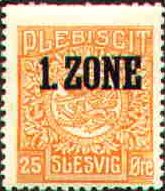
1 o grey 5 o green 7 o brown 10 o red 15 o lilac 20 o blue 25 o orange 35 o brown 40 o violet 75 o blue
Value of the stamps |
|||
vc = very common c = common * = not so common ** = uncommon |
*** = very uncommon R = rare RR = very rare RRR = extremely rare |
||
| Value | Unused | Used | Remarks |
| 1 o | c | c | |
| 5 0 | c | c | |
| 7 o | c | c | |
| 10 o | c | c | |
| 15 o | * | * | |
| 20 o | * | * | |
| 25 o | * | * | |
| 35 o | * | * | |
| 40 o | * | * | |
| 75 o | * | * | |
Larger size

1 K brown 2 K blue 5 K green 10 K red
Value of the stamps |
|||
vc = very common c = common * = not so common ** = uncommon |
*** = very uncommon R = rare RR = very rare RRR = extremely rare |
||
| Value | Unused | Used | Remarks |
| 1 K | * | * | |
| 2 K | ** | ** | |
| 5 K | *** | *** | |
| 10 K | *** | *** | |
I have seen a postcard of 15 p lilac in the same design (no overprint).
The above unoverprinted stamps exists with 'CIS' overprint ('Commision Interalliee Schleswig'). They were issued to be used for officials. I have seen the whole set of 10 valued overprinted with 'CIS', they all had the same cancel 'FLENSBURG 22 1 20 7-2N' (cancelled to order, or forgeries?). Example:
These 'CIS' overprints have been forged. Shifted overprints are always forged.
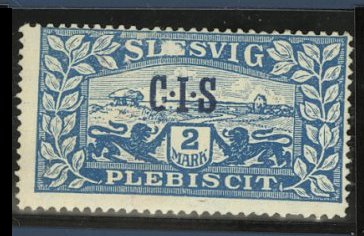
(I've been told that this 2 M stamp is genuine)
A small amount of the remaining proofs (most of the proofs were destroyed), were overprinted with 'MAK.' (Makalatur). They exist perforated or imperforate. Even inverted and double overprints seem to exist. Any cancelled stamps must be forged (since they could not be used for postage).
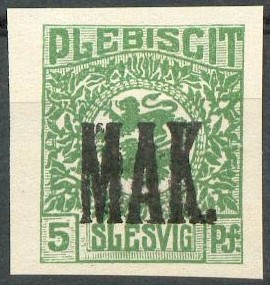
(5 p imperforate stamp with overprint 'MAK.')
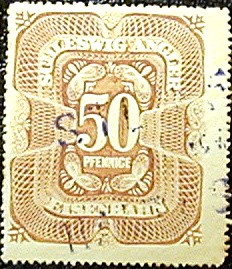
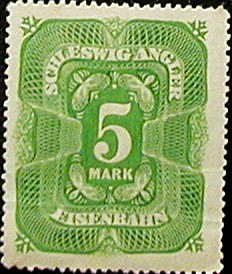
'SCHLESWIG ANGLER EISENBAHN', images obtained thanks to Jim
Leonard.
Exists in 10 pf red, 20 pf blue, 50 pf brown, 80 pf green, 1 mk blue, 3 Mk orange on blue and 5 Mk green on red and 10 Mk brown on blue. The value is indicated in 'PFENNIGE' or 'MARK'. These stamps were reported in 'Le Timbre Poste' No 335, page 111 (1890).
I have also seen another smaller design (50 p only, but other values might exist):
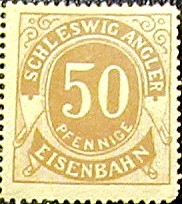
Image obtained thanks to Jim Leonard.